Written by Esha Chhabra with supplemental reporting by Jess Daniels. Photography by Ashish Chandra and Nishanth Chopra, as noted.
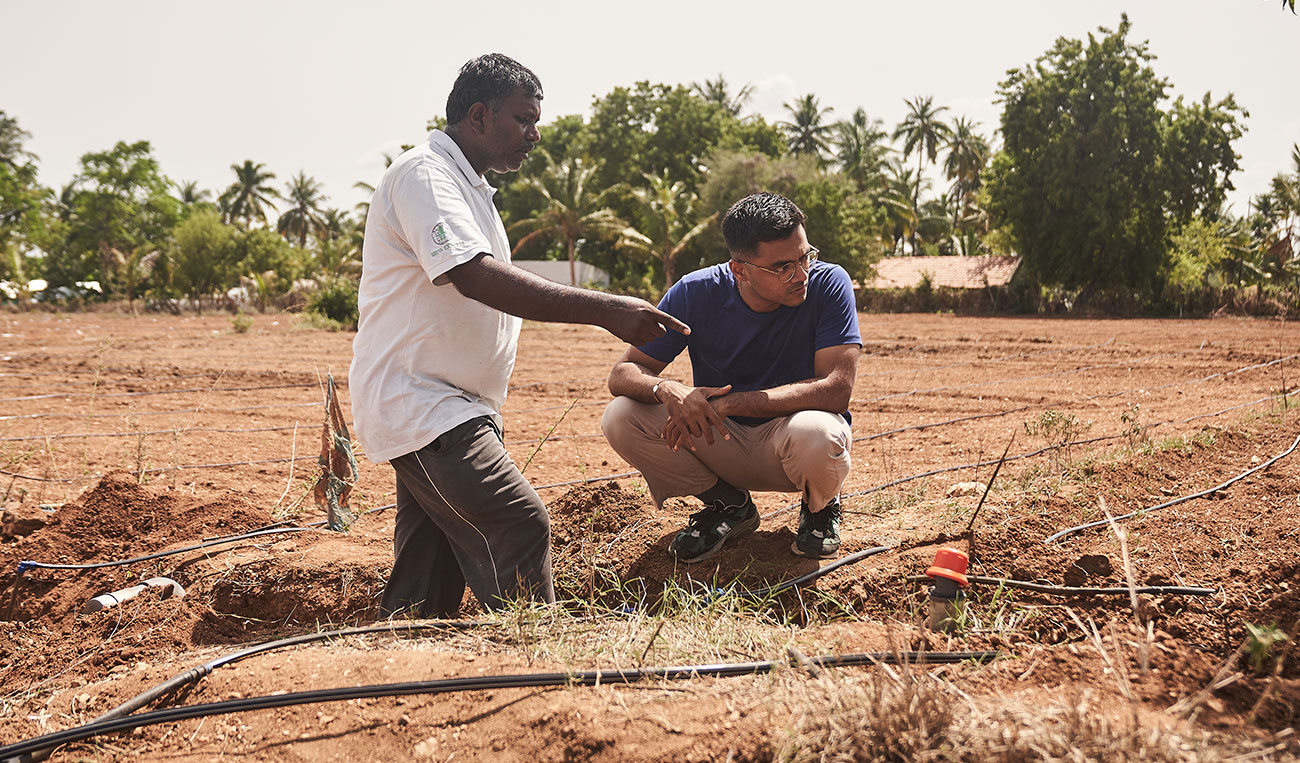
Nishanth Chopra grew up in a city that’s seeing record cancer rates. But it’s not a coincidence, he says.
“I don’t think I would have been as passionate about organic farming and ethical supply chains if I had grown up in Bombay or Delhi, somewhere far away. It’s because I saw all the damage happening first-hand that I’ve been so keen to bring about solutions and change.”
Erode, situated about two hours from Coimbatore in the southern state of Tamil Nadu, has been at the heart of India’s textile manufacturing prowess.
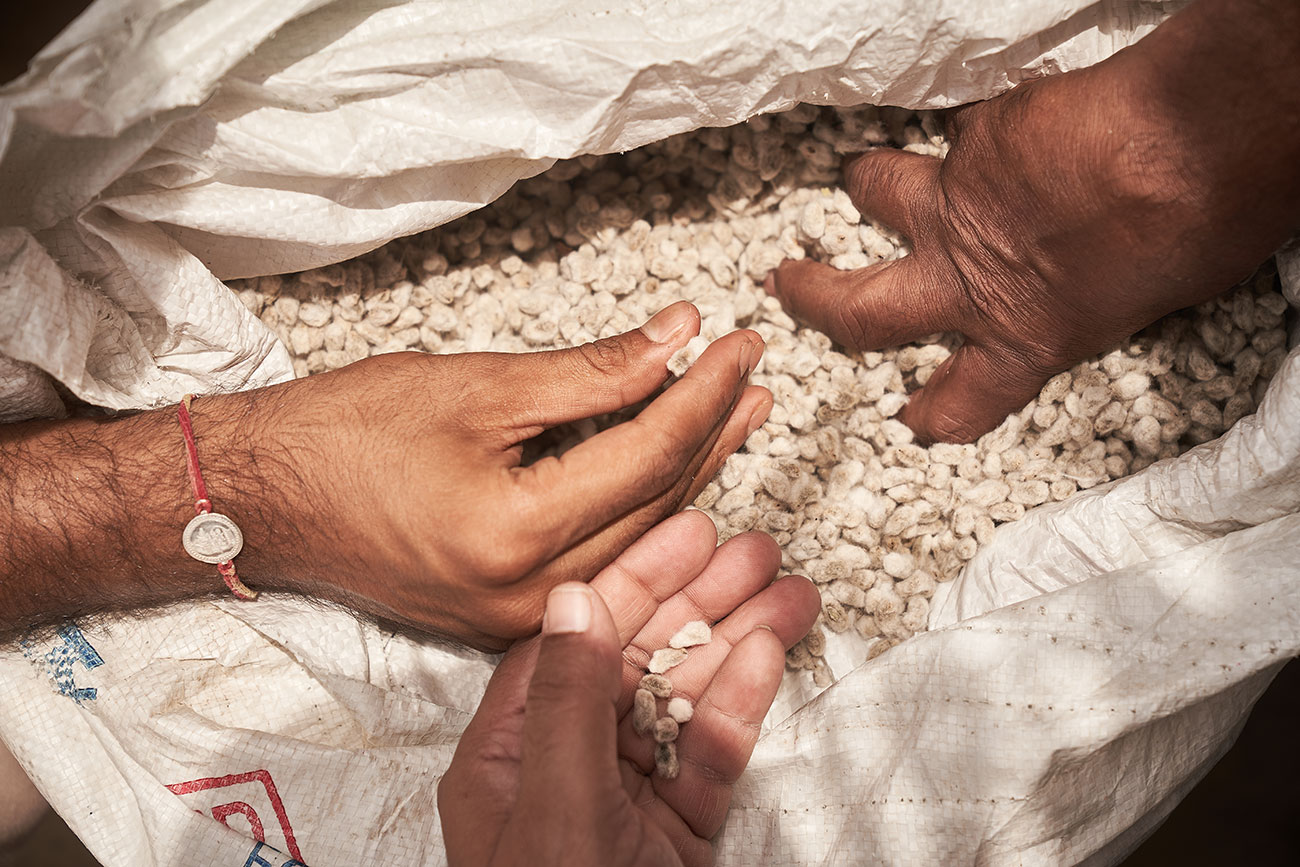
And Chopra’s family was in the thick of it, operating a cotton and linen manufacturing business. But for the young entrepreneur, it became hard to digest the impact of all this manufacturing: the polluting of nearby waterways, the lack of working standards in some factories, and the endless middlemen involved in the production process.
At 21, he decided to go into organic farming, getting a small plot and growing fruits and vegetables on it. He sold it in the local market but quickly saw the problem: there was no economic incentive for farmers to farm organically. Buyers were not keen on paying a premium, and the profit margins were slim.

He shifted back to what he had grown up around: textiles. When he set up Oshadi, envisioned a new, more eco-friendly and ethical way of manufacturing, growing a company that produces its own label but also consults international brands and supplies them with fabrics. He’s worked with London-based Stella McCartney, Japanese label Story MFG, and others, producing organic cotton wares that are vegetable-dyed.
Oshadi’s latest collaboration is with Los Angeles-based Christy Dawn. Returning to his passion for organic farming, this most recent project is a farm-to-closet collection. By leasing a small four-acre lot from a local landowner, Chopra and his team are helping farmers convert soil that’s been conventionally farmed for decades into a regenerative farm. It’s in a transitional period, but from the beginning, Chopra has been emphasizing the use of regenerative practices, which he notes are really just tapping back into traditional farming practices.

Sitting near a major highway, the farm is surrounded by recent development: farmland, he explains, is disappearing in the interest of constructing more office spaces, stores, and residences.
Yet, a team of farmers have been lovingly tending to the dry, depleted soil, and injecting it with nutrients made from organic matter, sourced a few meters from the farm. To begin with, they introduced earthworms to increase oxygen levels in the compacted soil.
“The ground was dry, hard, and so difficult to work with. Earthworms were the first step and much needed if we were going to go back to organic and regenerative ways,” Chopra says.

Then the cotton seeds were planted and supported by several local concoctions: first cow dung was added to the soil; then a combination of farmyard manure, neem, and sesame cakes to give the cotton plants nutrition as they grow; followed by vermiwash (made on-site and delivered via drip irrigation).
As the cotton plants have matured, they’ve been supplemented with local fertilizers known as panchagavya and jeevamritham. Pachagavya, refers to “panch” (or five in Hindi) ingredients: cow milk, yogurt, cow urine, ghee (clarified butter), and cow dung. Jeevamritham is cow dung again, but with cow urine, pulsed flours, jaggery, and water. The cow dung has beneficial bacteria which multiply in the fermentation process.
Lastly, pest control is a mix of ginger, garlic, and chili spray or simply neem oil, which is in abundance given the prolific growth of neem trees in the region.
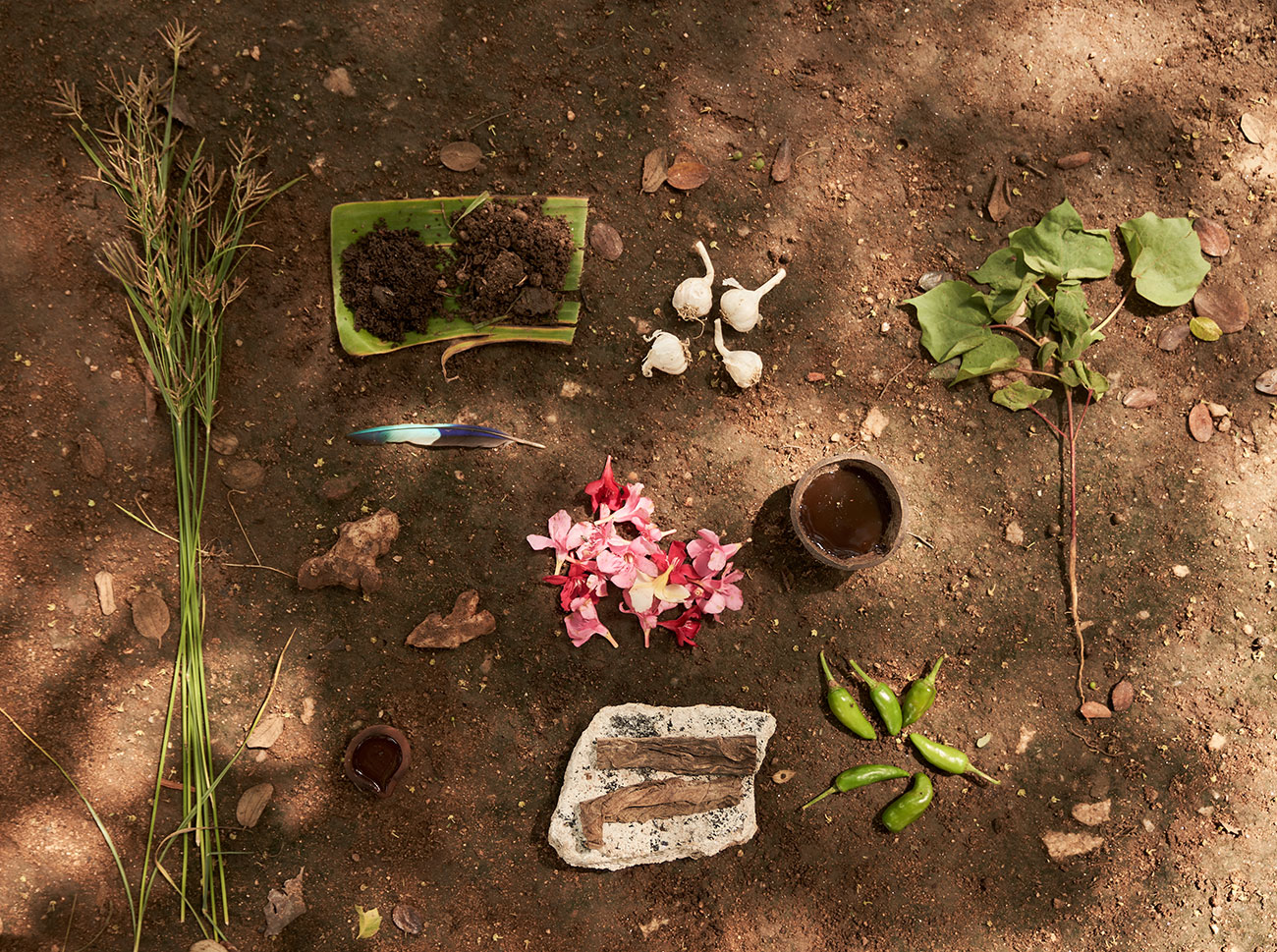
“Everything is coming from around the farm. There are no other inputs that are being bought at the market. The idea is to make this farm self-sufficient,” Chopra says.
Tamil Nadu had faced drought conditions for years, he explains. This year, they’ve had record rainfall, which means the farm is largely rain-fed. Even though the farmers put in drip irrigation, fearful that the weather may not cooperate, the farm is actually thriving thanks to all the rain.
As challenges arise and pests appear on the farm, Chopra is relying on local experts and organic farmers to help them manage the intruders. For instance, a mealy bug recently appeared on the cotton plants. The farmers prepared a concoction of cow urine, green chili, and neem leaves (which is boiled and left to ferment for a day); coupled with turmeric and ash powder, the cotton plant was quickly treated, and in less than a week, the bugs disappeared.
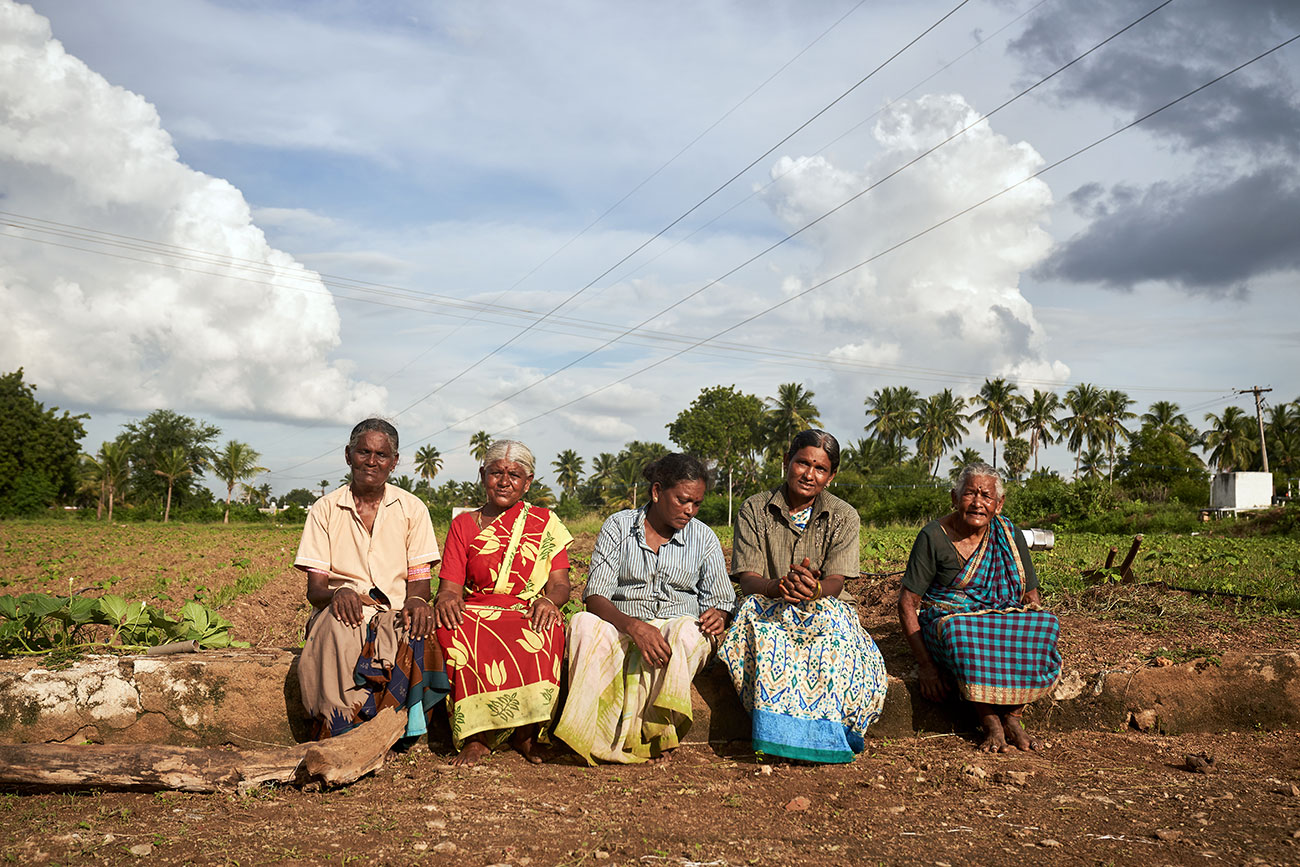
Some of this knowledge stems from the farmers themselves who are tending to the land. They recall the days of organic farming — nearly more than three or four decades ago, they note. “The food tasted better, people had fewer illnesses, life was healthier,” says one lady farmer.
Since they don’t own the land, they’re often working under the direction of a landowner. That landowner, like so many in India, has been focused on conventional farming. Yet, these farmers are excited that Chopra and his colleagues have decided to revive traditional farming methods.
In between the rows of cotton, crops sit green gram plants, also known as mung beans. The two have a healthy relationship: green gram has proven to increase cotton yields and provides stabilization of the soil, particularly with heavy rainfall. Once ready for harvest, the mung beans can be sold in the local market and be consumed by the farmers themselves since pulses and legumes are a large part of the Indian diet.

It’s yet to be determined if this project will be a long-term success. After all, it started with just five acres alongside the main highway. Yet already, the opportunity to expand to a wider footprint of nearly 50 acres, in collaboration with more farmers, has opened up.
“In 10 months, we’ve come from 5 acres to 50 acres, and we are working with 15 different varieties of plants as intercrops, cover crops, pollinator strips, and every single crop on the land is native to this region,” Chopra recently shared with Fibershed.
Scaling within his home community, Chopra added, is part of the vision for the Prakriti Fibershed Affiliate: “Just by myself — I realized, I can’t change things — it has to be a community, a community of brands and community of people to have a positive change.”
Now with 30 acres in cotton production and another 20 acres in preparation for cultivation later this year, he is eager to discern the impact from a carbon farming perspective. While they haven’t been able to complete testing and analysis (in part due to the lockdown in place since the spread of Covid-19), Chopra observes soil health restoration: “When we went in, the soil was grayish-brown, and now it’s red soil, you can see earthworms – you just have to go a few inches below.”
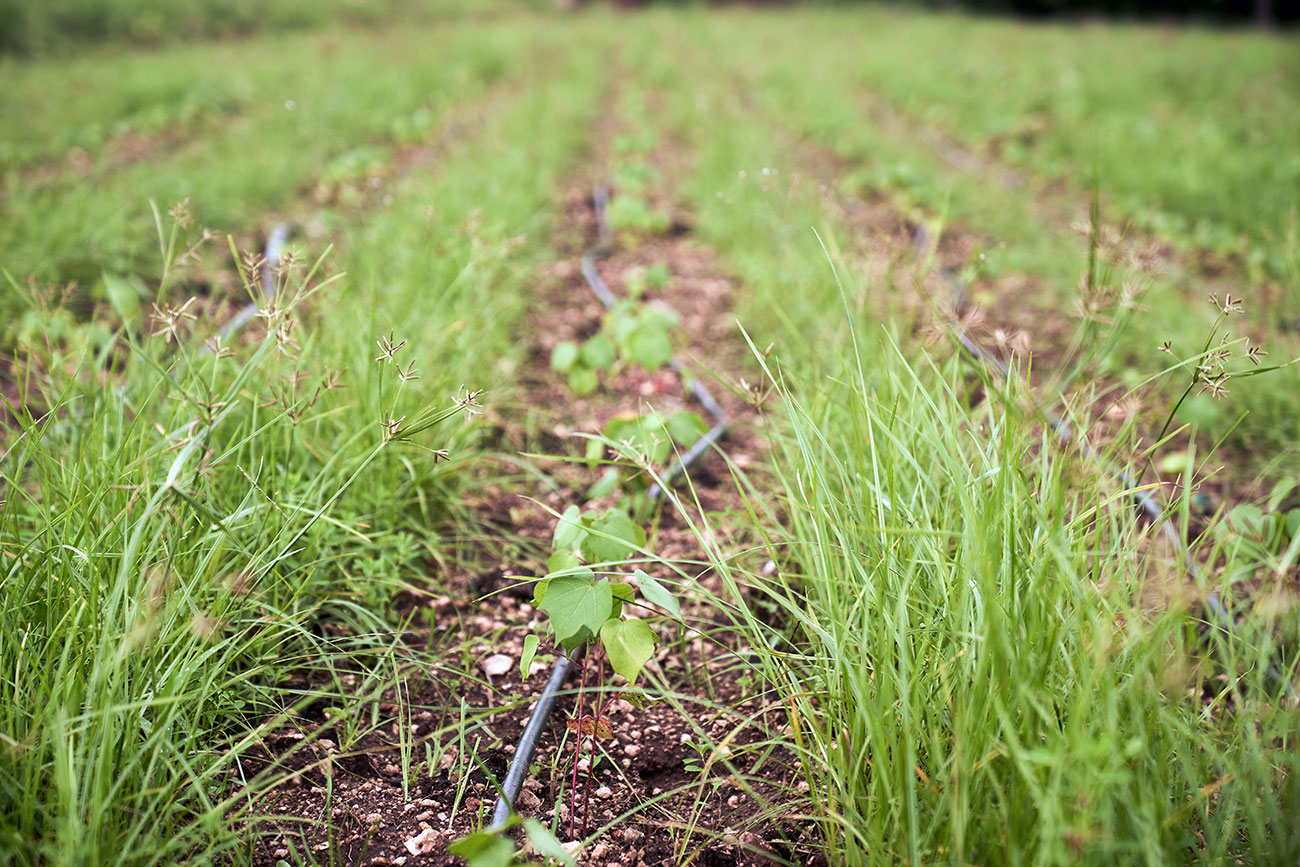
From collaborating with the community to incorporate traditional Indian compost techniques to installing drip irrigation, Chopra notes that “It has to be this right amalgamation of ancient techniques and modern technology — it has to come all together” — and the first harvest resulted in higher yields than expected, with 60-70% water savings.
It’s the birth of something that Chopra had been dreaming of for years: creating a true fibershed, farm-to-closet in the heartland of India’s textile industry. Less than forty minutes away, these cotton fibers will be woven by weavers. And with a preference for all things soil- and people-friendly, Chopra will use predominantly natural dyes in his clothes.
From start-to-finish, Chopra is able to oversee his textile supply chain; there are no middlemen—a serious departure for an industry that’s been built upon layers and layers of middlemen.
“Everyone makes a small impact. This is mine,” he says, seated alongside his seamstresses. It’s a humble gesture, given the potential of what he’s building.
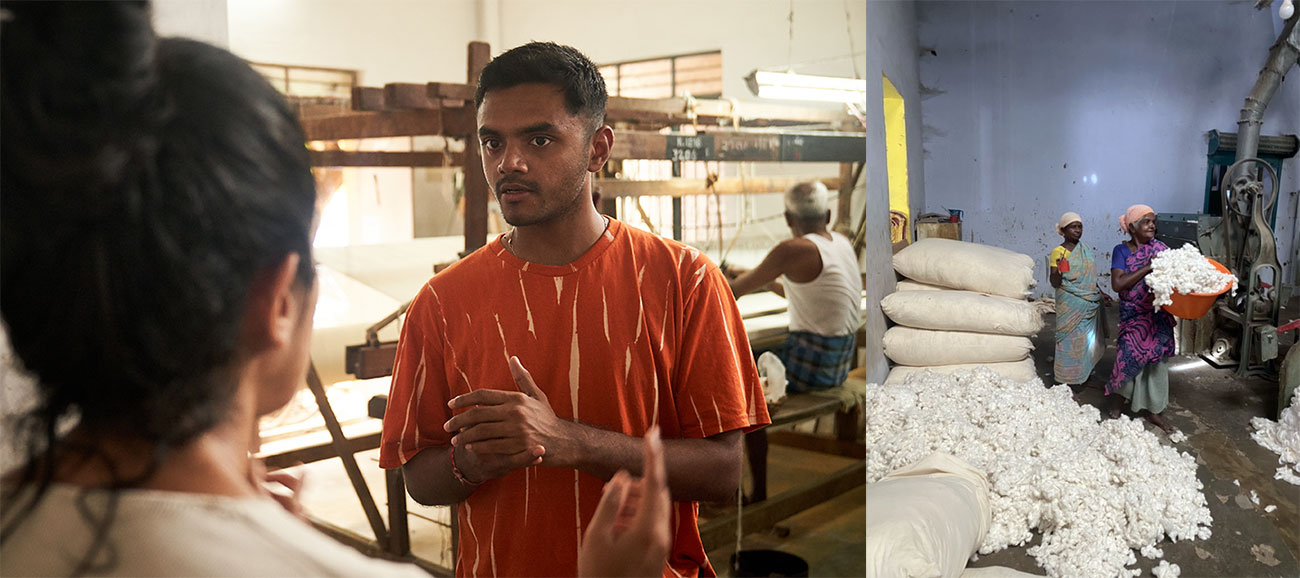
*Note: image above right by Nishanth Chopra
If you would like to learn more about this project and see a virtual tour of the cotton farm with Nishanth Chopra, we encourage you to sign up for Fibershed’s online course, Regenerating Our Textile Systems. When you join the course, you will receive access to the video replay of Session 1, “Defining Regeneration for Fiber & Textile Systems,” which features this project and Chopra’s perspective on regeneration.
